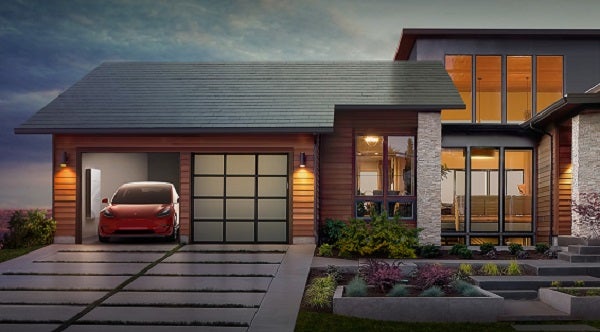Solar shingles: Creating excitement and raising questions

Tesla’s Solar Roof has created excitement as it comes closer to market. While we are technology and installer neutral, we hope to demystify this new building integrated solar system and raise some of the key questions that have not been addressed. Solar roofs can appeal to people averse to the look and style of traditional framed solar PV modules. Aside from aesthetic considerations solar roofs are guaranteed for the lifespan of your home.
Experts who have examined the cost of the solar roof have calculated its price per watt to be between $6.00-$6.50/watt. The average cost for a residential solar install today is about $2.84/W according to SEIA and GTM. However, this lower cost does not factor in the cost of the actual roofing components that the solar roof replaces. Also, it is not 100% clear whether the entire cost of the new shingle roof will qualify for the Federal Tax Credit (30% of system cost) or just the shingles that contain solar cells.
If you’ve recently installed a new roof, the integrated solar roof may not make financial sense, since it is much more expensive when compared to a standard solar system. The economics of this product depend on the type of roofing material you would be replacing. If you are replacing a slate roof, but want the slate aesthetic with the solar roof, it may make more sense since a traditional slate roof is costly. However, if you are replacing more common asphalt shingles, the price of a solar roof may not be as competitive as a full roof replacement with asphalt shingles plus a standard solar install.
Another consideration to keep in mind when evaluating this product is that it is in fact a roof. Roofs require more code compliance than solar systems themselves. Their installation is more complex than a standard solar install. Tesla has not made it clear who will be handling the actual installations of the roof.
As the company rolls out this product into new markets, will Tesla subcontract with established roofers or will they utilize their existing installation teams to facilitate the work? Further, Tesla has yet to show how it will manage the complexities of the roof installation. Will the shingles be wired to one central inverter or will they be grouped and wired to micro-inverters or optimizers? Will local jurisdictional electric, building, and fire codes support this type of building integrated solar system? Will the failure of one tile effect the energy production of other tiles? What are the replacement costs for failed tiles or will they be abandoned in place, reducing the overall energy production value of the roof? Along with the complexities of the install, Tesla has stated that they do not have a solution for flat roofs, a relative minority in the housing stock, but ubiquitous in urban environments.
We are excited to see how this product will be deployed and we are eager to see any solar technology that helps individuals take control of their energy production. We hope that the cost of solar roofing technologies like the Tesla shingle will be brought down as production scales, enabling more to take advantage of solar.
